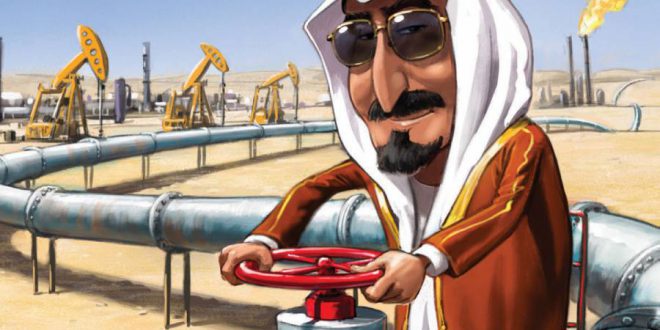After three years of record budgets to spur growth. Saudi Arabia said Monday it plans to scale back government spending through 2022. forecasting lower oil revenues and a lesser reliance on its lifeblood industry as its ambitious economic reforms take hold.
The Middle East`s largest economy and the world`s largest crude exporter plans to spend Riyal 1.02 trillion (US$272 billion) in 2020. down 2.6% from 2019. according to its budget statement. Government expenditures will fall further to Riyal 990 billion in 2021 and Riyal 955 billion in 2022. it added. as the kingdom expects its initiatives to diversify its economy away from oil and foster new industries to begin to bear fruit.
Crude oil production cuts implemented by OPEC. largely at the behest of Saudi Arabia. will weigh on 2020 revenues. which are expected to fall 14.8% from 2019 levels to Riyal 513 billion. the kingdom said.
The budget deficit will widen to 6.4% in 2020 from 4.7% in 2019 as the government earns less from oil.
In addition to the OPEC cuts. the budget cited `challenging global economic and international market conditions.` including global trade disputes.
Crown Prince Mohammed bin Salman said in a statement that Budget 2020 arrives amid a global economic climate that presents `challenges. risks and protectionist policies. which requires flexibility in managing the public finances and enhancing the ability of the economy to address these challenges and risks.`
The government said it would extend a cost-of-living allowance to state employees. military personnel. retirees and students — started in January 2018 to head off citizen complaints over rising costs — through the end of 2020.
The Saudi government does not publish its fiscal breakeven oil price. but in a report in October. the International Monetary Fund forecast that Saudi Arabia would need a breakeven oil price of $83.60 b in 2020 to balance its budget.
REFORMS UNDERWAY
The reduced spending comes as Saudi Arabia embarks on its much vaunted Vision 2030 program. aimed at reducing the kingdom`s reliance on oil revenues and diversifying its economy by encouraging private investment in non-oil industries.
The budget did not mention what the government will do with the proceeds from the initial public offering of state oil company Aramco. a central plank in the Vision 2030 program. The IPO will raise $25.6 billion in the world`s biggest listing. valuing the company at $1.7 trillion. Shares will begin trading Wednesday on the domestic stock exchange.
Saudi Arabia`s economic growth is expected to reach 2.3% next year from an estimated 0.4% this year. which is lower than the government`s October estimate of 0.9%. the budget statement showed. Growth will dip to 2.2% in 2021 and rebound to 2.3% in 2022. the statement said.
`Non-oil revenues are expected to improve in the medium term due to improvement in economic activity.` the budget stated.
Besides Vision 2030. Saudi Arabia has in recent years sought to reform its tax structure and lower subsidies on energy and electricity to shore up its finances.
Saudi Arabia started the reforms in 2016 after the budget deficit ballooned to a record Riyal 367 billion in 2015 as the oil price began to crash in mid-2014 from above $100 b. The government expects is budget deficit to narrow to 2.9% by 2022. planning to draw on its fiscal reserves and tap bond markets to support its spending.
The budget projects Saudi debt will rise from Riyal 678 billion in 2019 to Riyal 924 billion in 2022. with debt comprising 29% of the country`s GDP. At the same time. government reserves will fall from Riyal 467 billion in 2019 to Riyal 265 billion in 2022.
OPEC+ DEEPENS CUTS
The OPEC+ alliance. led by Saudi Arabia and Russia. agreed last week to deepen their oil cuts to 1.7 million b d from the current 1.2 million until the end of March amid concerns of oversupply in the first quarter of next year. On top of that. Saudi Arabia announced an additional 400.000 b d cut to bring the coalition`s total production curbs to 2.1 million b d.
Under the new deal. Saudi Arabia`s quota will be 10.144 million b d. but the kingdom pledged to produce 9.744 million b d.
Saudi Arabia has been producing under its quota for most of 2019 as it led by example within the OPEC+ alliance and made up for lax compliance from other members. including Iraq. OPEC`s second-largest oil producer. Nigeria and to a lesser extent Russia.
The kingdom said in its budget statement that it `aims to stabilize the global crude oil market. balancing the interests of producers and consumers. and providing a conducive environment for sustainable global economic growth.`
But. it acknowledged. oil price volatility over the last few years is limiting oil exporting countries` `fiscal planning capabilities.`
 Iran Energy News Oil, Gas, Petrochemical and Energy Field Specialized Channel
Iran Energy News Oil, Gas, Petrochemical and Energy Field Specialized Channel




